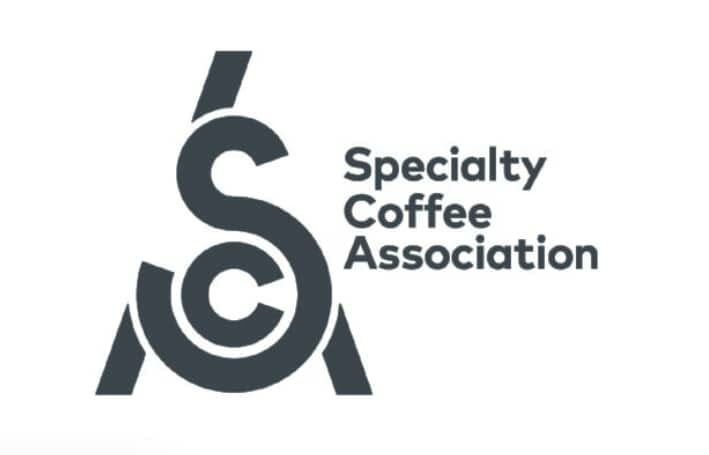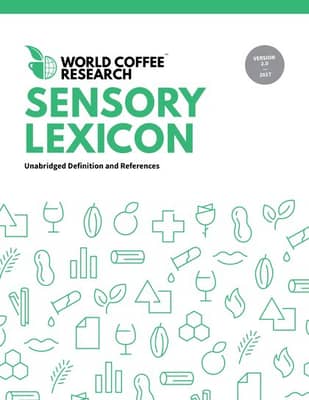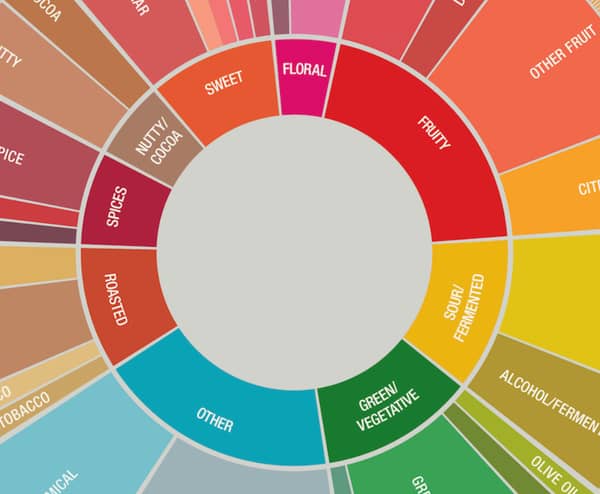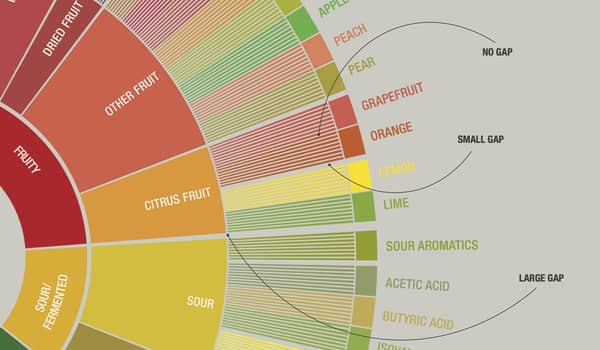There’s more to drinking coffee than just simply gulping it down your throat. It’s about identifying the intricate coffee flavors that go into making that cup of Joe shine.
But you don’t have to start the journey of tasting coffee blindly. The Coffee Flavor Wheel distributed by the Specialty Coffee Association [SCA] can assist you as long as you know how to utilize it.
In this article, I will explain in detail how exactly you can make the most out of the Coffee Taster’s Flavor Wheel to take your first steps as coffee tasters.
You won’t master it right away. But practice makes perfect.
What Is A Coffee Taster’s Flavor Wheel?
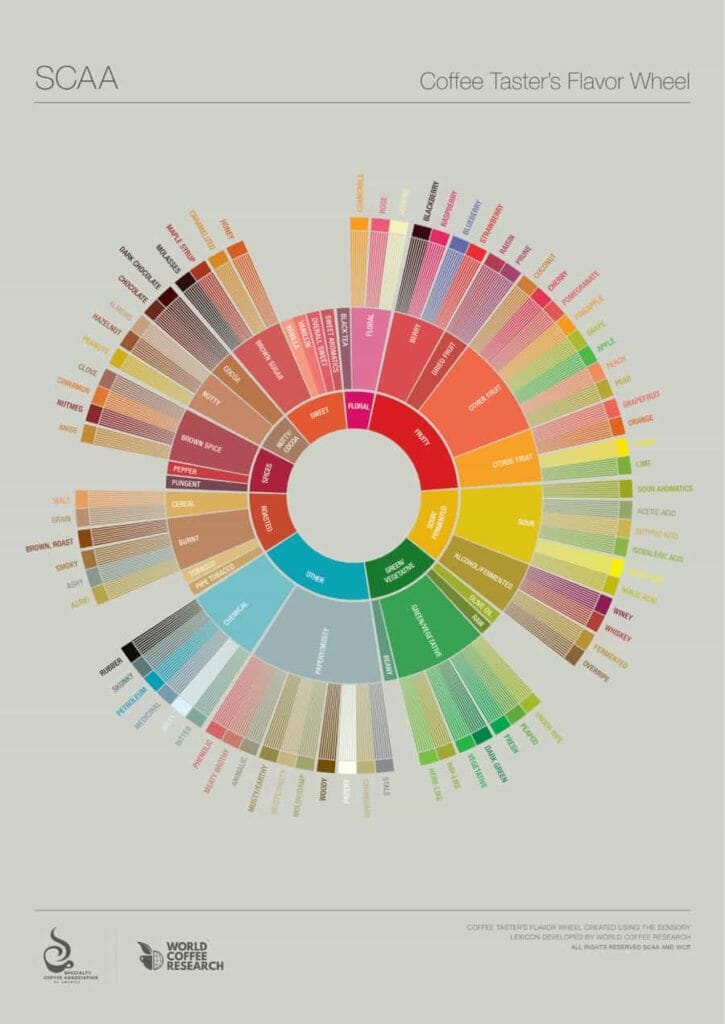
Okay, in case you’re clueless about the topic at hand, let’s go through the basic definition first.
The Coffee Taster’s Flavor Wheel is a wheel detailing an entire continuum of shades of possible coffee flavor that can be picked up when drinking coffee.
Its job is to assist you in accurately identifying flavors as a coffee aficionado or just an average coffee drinker.
Other than its meaningful function in the coffee industry, the Flavor Wheel has also become iconic for its beautifully colorful design, adding an aesthetically pleasing touch to your coffee corner.
Who Is Responsible For Creating The Coffee Flavor Wheel?
Specialty Coffee Association
The Specialty Coffee Association of America [SCAA] is dedicated to promoting the sharing of knowledge and activities for the sustainable development of the coffee industry.
It recently merged with the SCA of Europe to form the SCA we know of today so you’ll find SCAA and SCA being used interchangeably throughout the article.
The Coffee Taster’s Flavor Wheel was originally published by the SCAA in 1995. It quickly became one of the most iconic resources in the coffee community and has been utilized as an industry standard for over two decades.
And in 2016, the Flavor Wheel was once again updated.
The original Flavor Wheel was created a bit too early into the development of specialty food and beverage wheels. The construction is also mostly credited to only one individual, Ted Lingle.
And so the 2016 version of the Coffee Tasters Flavor Wheel was updated based on our updated knowledge of the wheels and more reliable scientific research.
It was all thanks to the joint efforts of many coffee professionals who are members and volunteers of SCAA and the industry professionals from different organizations, including the World Coffee Research [WCR].
World Coffee Research
The WCR is a non-profit research and development organization that’s driven by its mission to advance the supplies of good-quality coffee beans and improve the livelihoods of coffee farmers.
And the SCAA was also one of the contributors to the foundation of the WCR.
So where does the WCR come into play in the creation of the new Flavor Wheel?
All of the words describing different flavor attributes that can be found on the wheel in fact come from the WCR Sensory Lexicon, the biggest collaborative piece of a research project on coffee’s flavors and aromas that’s ever been implemented.
With the Sensory Lexicon, they then had the words to put on the wheel. The next thing they needed was to find a way to sort them into appropriate categories/tiers on the wheel.
And the industry standards were successfully conceived with the help of sensory scientists and coffee professionals across the industry.
How Do You Use A Coffee Tasting Wheel? 8 Simple Steps
Here’s how to make the most out of your Flavor Wheel to serve professional purposes, such as professional coffee cupping, or elevate the coffee experience of everyday coffee buyers.
Step 1: Look Through The Wheel
Take a quick scan through the kaleidoscopic picture of a Flavor Wheel from the center outward.
Don’t worry too much about the terms that you’re not familiar with for now.
Step 2: Smelling And Tasting Coffee
Smelling Coffee
Since the nose and mouth are connected through the same airway, the olfactory system, your sense of smell, can play a big part in determining the flavor of the foods and drinks you consume.
After all, the Flavor Wheel covers every spectrum of the flavor which can be anything from the basic tastes (to be picked up by the gustatory system) to the pure aromatics (to be picked up by the olfactory system).
So before taking the first sip of your morning cup, always remember to properly smell it first.
Clean your nose properly before starting making coffee so that it isn’t stuffed with anything that may interfere with your connection with the aroma that the coffees give off.
- Smell the distinct fragrance of the whole bean coffees as you open the bag.
- Take in the aromas of the freshly ground coffees.
- Breathe in as the hot water hits the coffee bed surface. It’ll slowly expand as it blooms and releases CO2 and more aroma.
- Tilt the final cup of coffee drink near your nose and get a whiff before tasting.
You can take a mental or physical note of whatever you can pick up and describe for future references as you get better down the road.
Tasting Coffee
Now, let’s put your gustatory system to work.
Just like how you clean your nose, drink a bit of water first to clean your taste palate so that whatever you put in your mouth previously wouldn’t mess with your taste perception.
Take the first sip and take a mental or physical note of the flavors, the brightness, the body, the smoothness, the cleanliness, as well as the aftertaste.
Step 3: Check The Flavor Wheel
The wheel’s design encourages you to start at the center where the most general taste descriptors are and slowly work outward as you try to identify the flavors more specifically.
Some of the common general coffee flavors are sweetness, fruitiness, nuttiness, spice, and sourness.
For example, your coffee menu is a Pumpkin Spice Latte, so you’d most likely identify some spicy flavors from the cup of Joe.
The spice category branches into 3 other more specific flavor indicators: brown spice, pepper, and pungent. Pay attention and try to determine what kind of spice it’s most reminiscent of.
Since it’s a Pumpkin Spice Latte made up of a traditional combination of autumn spices, brown spice flavors should make the most sense.
Working farther outward, can you taste the cinnamon, nutmeg, clove, and anise flavors?
After you’ve figured out the flavor of the spices, move back to start at the center of the wheel again to identify other possible flavor profiles. Your cup of Joe can be a lot more multi-dimensional than the average character in movies.
For casual tasting, you don’t have to stick to the very end. Feel free to stop anywhere you want as the tiers work outward.
But of course, the more specific, the better you can pinpoint the nuanced differences between different coffees.
Step 4: Read The Sensory Lexicon
The professional tasters don’t simply stop at Step 3. The things perceived should be further evaluated for scientific research purposes beyond the wheel alone.
The Lexicon is a valuable resource that contains definitions and flavor references for each flavor attribute to help tasters clarify any confusions they may have.
Step 5: Check The References
As I’ve mentioned above, the attributes in the Lexicon have references that can be found in supermarkets as well as online sources.
Feel free to taste and smell the flavor references to get yourself accustomed to the different tastes of coffee.
The aromatic references, however, can’t be ingested so don’t go any further than getting a sniff.
Step 6: Back To The Wheel
Now that you have more accurate knowledge about the tastes from reading the Lexicon and checking the references, take another sniff and sip of the coffee and go back to the center of the wheel.
But this time, rather than focusing on the words, you’ll look at the gaps between the attribute blocks.
The smaller the gaps are, the more closely related the professional tasters consider them to be. And vice versa.
This identification process can be helpful when calibrating the taste descriptors to other tasters and designing descriptors so that they’re easiest to understand.
Step 7: Communicate
All of these tools, especially the Flavor Wheel, have created a common language among professionals in the coffee industry for ease in studies, research, as well as other forms of communication.
Step 8: Study The Colors
If you haven’t noticed already, the wheel is very colorful as each flavor attribute gets assigned a different color.
Our perception of foods and beverages is also influenced by their visual appearance.
So the sensory scientists and other professionals who worked on the wheel also paid special attention to the colors to make sure that they are closely related to the terms to represent the attributes appropriately.
This coloring system can also help the struggling taster find the right descriptor for their coffee more easily.
For example, sometimes all you can vaguely tell is the coffee tastes like some sort of red fruit.
Scanning the red-colored attributes section on the wheel can give you a bit more clue of what you’re trying to put a finger on.
How Can You Make Your Coffee Sensors Better?
To make sure that you can most accurately taste the coffee, some preparations need to be done.
Drinking coffee can increase the production of stomach acid, so if you have any digestive issues, try to avoid drinking coffee on an empty stomach.
Before getting started around 30 minutes, have a light meal with mild ingredients so that the strong flavors wouldn’t affect your perception.
And, how do you cleanse your palate for coffee tasting? The best bet is a few gulps of plain water or seltzer to leave your palate clean and refreshed.

![The SCAA Coffee Flavor Wheel [Explained]: How to Read it & Become the Ultimate Coffee Taster 2 The SCAA Coffee Flavor Wheel](https://coffeegeek.tv/wp-content/uploads/2021/12/The-SCAA-Coffee-Flavor-Wheel.jpg)
